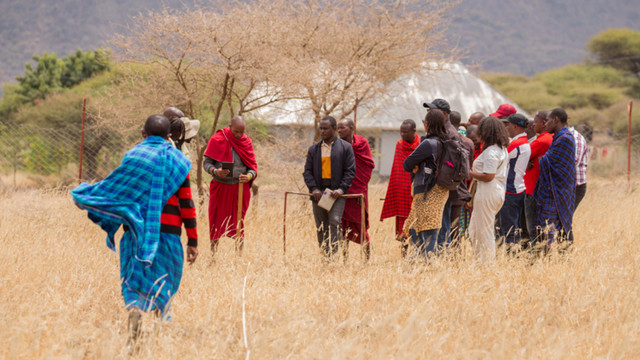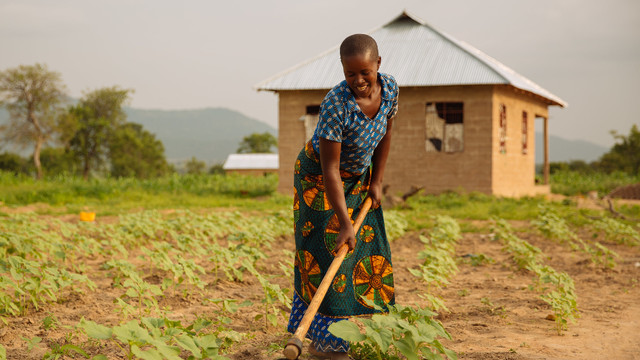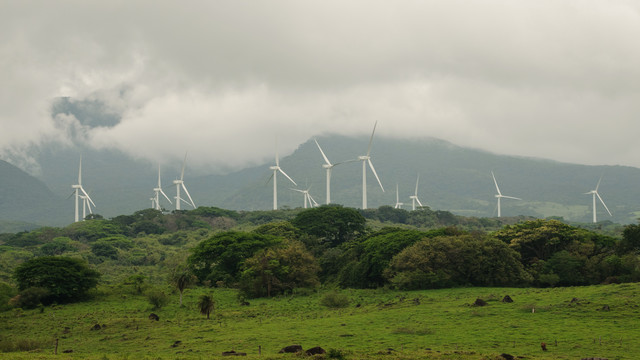Investing in natural capital to deliver the SDGs and reduce poverty
With the meeting of the UN High-level Political Forum on sustainable development under way, Paul Steele discusses how natural capital can help achieve the Sustainable Development Goals (SDGs) and lift the poorest out of poverty.


Durban Beach, South Africa. The local government of Durban has sought to reduce upstream industrial pollution to protect the coast and marine environment (Photo: Darren Glanville, CC BY-SA 2.0)
As the UN High-level Political Forum on sustainable development meets in New York to debate progress on eradicating poverty, it is timely to highlight the role of natural capital in sustaining the livelihoods of poor women and men.
SDG 14 to conserve life below water and SDG 15 to protect life on land must be at the heart of delivering the SDGs for poor people.
This natural capital is fast being decimated with poor communities, that rely heavily on natural resources for income and employment paying the price.
But this degradation can be turned around by investing in natural capital to achieve the SDGs and the Paris Climate Agreement.
Investing in Natural Capital was the theme of last month's 22nd Poverty Environment Partnership (PEP) meeting.
PEP seeks to build a wider understanding of how an integrated approach to reducing poverty and the sustainable use of natural resources can help us meet the challenges of sustainable development and poverty eradication.
The meeting heard how, while natural capital continues to decline, many new initiatives under way are seeking to reverse the damage.
New players, new alliances
New alliances are being formed – across local and central government and with the private sector – and new players are starting to invest in natural capital.
Natural capital is no longer just the responsibility of the ministry of environment. It involves the ministry of local government and ministry of finance, which are now beginning to see the business case for investing in natural capital.
In South Africa, the local government of Durban has sought to reduce upstream industrial pollution to protect the coast and marine environment. This investment was financed by Durban's local government but private developers must play a role in the future.
So too must the tourism sector, as Thompson Bongumusa, head of development planning at the municipality of Durban explains: "This investment helps ensure our coast has clean water and stays attractive to tourists. Because of the benefits this brings to the tourism sector we should be able to introduce a tourism levy."
In Nepal, it is again local governments that are taking the lead in providing finance for investments in natural capital through grants to local government authorities.
"In Nepal we are promoting environment-friendly local governance and encouraging local governments to invest more into natural capital," said Reshmi Raj Pandey, joint secretary in Nepal's Ministry of Federal Affairs and Local Development.
In the Philippines, the private sector is being brought into natural capital investment through working with water concessionaires in the capital Manila. As Adelina Santos Borja, department manager III of the Philippines' Laguna Lake Development Authority explains, these water concessionaires know instinctively whether the forest is healthy – which is crucial for a sustainable water supply.
In Tanzania the Ministry of Finance, recognising the importance of natural capital for supporting livelihoods, is investing general government budget in natural capital. Khatibu Kazungu, deputy permanent secretary of Tanzania's Ministry of Finance and Planning explains, however, that the ministry is always looking for new ways to finance natural capital such as payments for ecosystems services, where farmers or landowners are paid to manage their land or watershed, encouraging the conservation of natural resources.
Bringing in these new players is not without challenges. Focusing only on major 'bankable’ natural capital investment projects can sound alarming to those working at the grassroots as it suggests a top-down approach that might bypass or even undermine local people. Indeed investment in many small-scale natural capital initiatives can have as much potential as a few large-scale natural capital investments.
Empowering local communities
Communities can also invest their own labour and resources in natural capital, as in the case of Nepal's community forestry user groups. Communities are not passive bystanders waiting for solutions – they know the crucial role that forests, fresh water, land and mountains play in lifting people out of poverty. And in devising local solutions they have shown they are natural innovators and vital stewards of the planet's natural resources.
We need a system that empowers these communities to design their own business plans based on their own needs – to ensure that private sector/governments/donors take that into account.
Scaling up small-scale initiatives depends on governance frameworks, pricing policies and overcoming political economy challenges. But communication and technologies are now challenging these older approaches where the government would scale up community action – increasingly we are seeing communities sharing business models directly with each other.
Combining or 'aggregating' many smaller scale natural capital projects is also needed to leverage additional private capital.
More private sector buy-in needed
While some private companies are becoming interested in natural capital investment, this still represents only around five per cent of companies in the private sector.
Much more investment is needed. Measures such as pricing natural capital damage and using environmental fiscal reforms to remove perverse subsidies will help harness the power of the market and shift private sector behaviour in favour of positive natural capital investment.
Paul Steele (paul.steele@iied.org) is chief economist at IIED.



